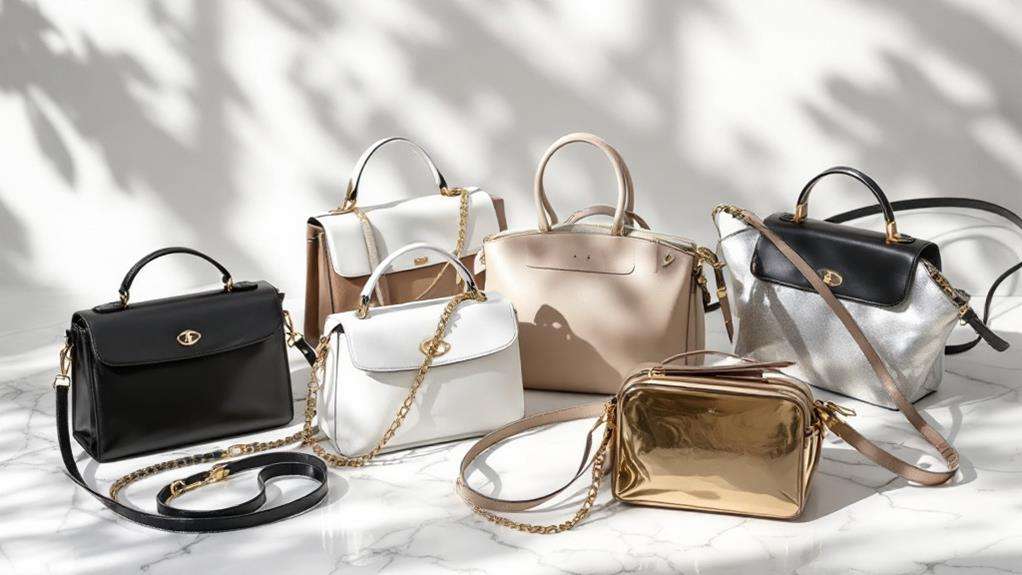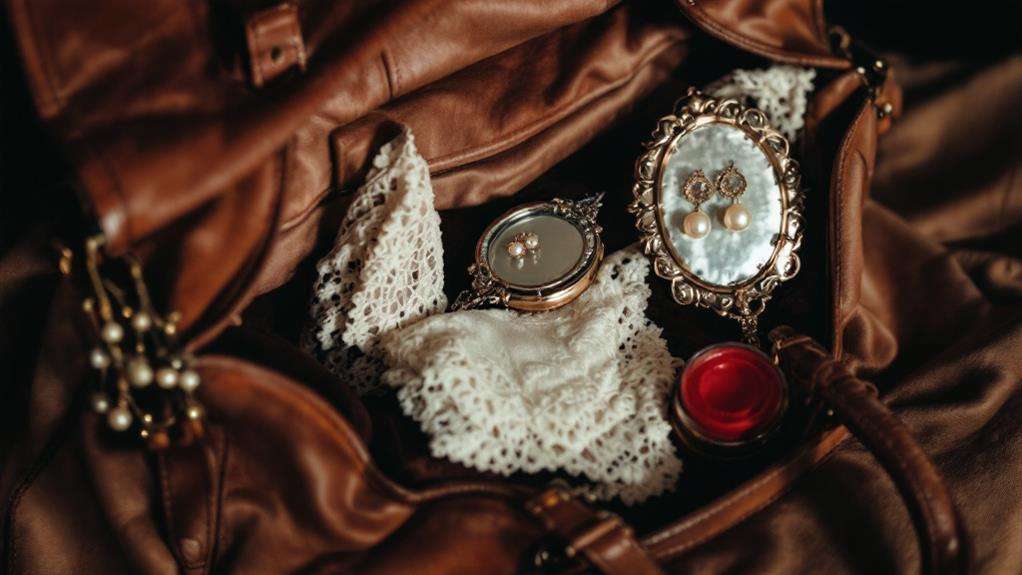What Was a Reticule in the 1800s?
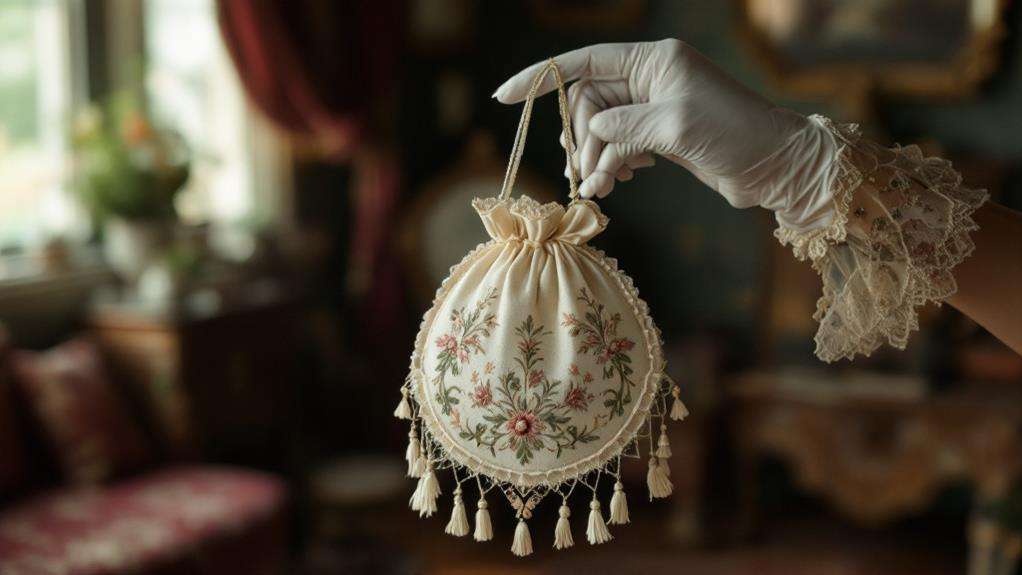
In the 1800s, a reticule was a must-have accessory for women, emerging as a fashionable and functional small bag. It replaced the hidden waist-tied pockets as clothing became lighter and more form-fitting. Reticules were made from luxurious materials like silk, satin, and velvet and often adorned with intricate decorations such as tassels and lace. They featured drawstring closures and came in different shapes, reflecting the owner's personal style and societal status. Initially mocked, reticules became symbols of women's growing autonomy and self-expression. To uncover more about their cultural significance and evolution, investigate further.
Origin and Etymology
How did the term "reticule" come to be associated with a fashionable accessory in the 1800s? The word "reticule" has its origins in the French term "réticule," which translates to net or mesh. This reflects the bag's primary design, crafted using netting techniques. As fashion evolved in the late 18th century, so did the needs of women. The cumbersome, heavy gowns were being replaced by slender silhouettes typical of Regency fashion, leading to a demand for more practical accessories.
You might be surprised to learn that reticules weren't just about style; they were born out of necessity. Before their emergence, women relied on waist-tied pockets hidden beneath layers of petticoats to carry their belongings. With the arrival of lighter clothing, these pockets became impractical, giving rise to the reticule as a handy alternative.
The initial documented use of "reticule" in English dates back to the 1730s. However, it gained popularity after the French Revolution in the late 18th century. This shift marks a broader societal change towards women's autonomy, as reticules allowed them to carry personal items publicly without depending on men.
Design Features
Reticules in the 1800s truly stood out with their luxurious materials and intricate designs. These charming accessories were made from rich fabrics like silk, satin, and velvet, often adorned with exquisite beadwork and embroidery. Their appeal didn't stop at the fabric, though. Reticules came in diverse shapes, including square, tulip-shaped, and even unique five-sided designs, each equipped with a practical drawstring closure for easy access to your belongings.
Visualize the elegance of these reticules with their:
- Tassels and crocheted lace, adding flair and charm.
- Scalloped edges, showcasing the careful craftsmanship of the time.
- Contrasting fabric linings, enhancing their aesthetic appeal with attention to detail.
The design of reticules evolved from simple netting in the late 18th century to more complex styles by the early 19th century, highlighting the artistic expression found in women's fashion of the period. Decorative elements like tassels and lace reflected the time's craftsmanship, making each piece a work of art. The contrast between fabrics and the beautifully designed closures demonstrated a profound attention to detail, ensuring that these small bags were both functional and fashionable. Reticules were not just accessories; they were statements of elegance and style.
Cultural Influence
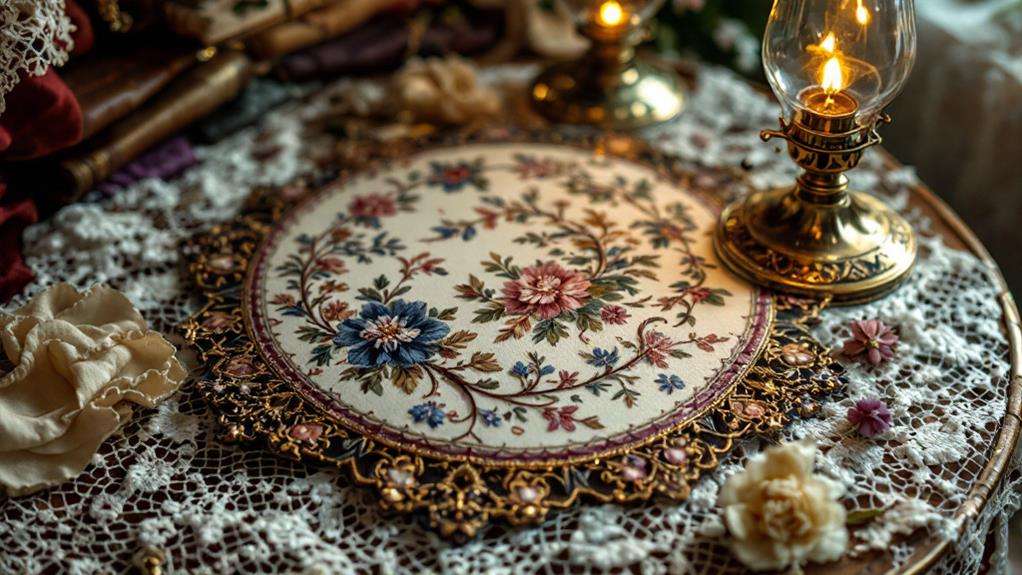
While the exquisite design features of reticules captured attention, their cultural significance in the 1800s played an essential role in redefining women's fashion and societal norms. As a significant fashion accessory, reticules marked a departure from the hidden practicality of pockets to the visible elegance of decorative bags. This shift allowed women to flaunt personal style and societal status, challenging traditional gender norms. Initially mocked in satirical prints, reticules became a symbol of women's growing autonomy.
The intricate craftsmanship of these bags wasn't just about aesthetics; it was a form of self-expression. Women often crafted their own reticules, showcasing their creativity and individuality. This personal touch transformed the reticule into more than just an accessory—it became a statement of identity and artistry during a period when women's roles were evolving.
Reticules reflected broader cultural narratives of the Regency period, symbolizing women's changing roles and independence. As women began to assert more autonomy, these bags became a subtle yet powerful emblem of that shift. Their popularity laid the groundwork for modern handbags, influencing fashion trends that seamlessly blend functionality with style today.
Evolution of Use
In the evolution of reticules, these quaint accessories shifted from simple drawstring bags for necessities like coins and handkerchiefs to fashionable items that improved women's outfits in the early 19th century. As women's fashion evolved to slimmer silhouettes, reticules found their place as stylish exterior pockets. They allowed you to discreetly carry personal belongings while showcasing your sense of style. No longer hidden beneath layers of fabric, these accessories became crucial parts of a woman's ensemble.
The design of reticules evolved remarkably, offering a wide range of materials and styles. Imagine:
- A delicate reticule crafted from netting, perfect for a light summer dress.
- A luxurious silk purse adorned with intricate embroidery, catching every eye at social gatherings.
- A velvet drawstring accessory with rich beadwork, adding a touch of opulence to your evening wear.
Initially, reticules faced skepticism, often mocked as "ridicules." Over time, their practicality and elegance won over critics, making them vital in fashion. They not only reflected your social status but also your personal style, marking a shift from hidden pockets to visible, decorative forms of carrying essentials.
Modern Relevance
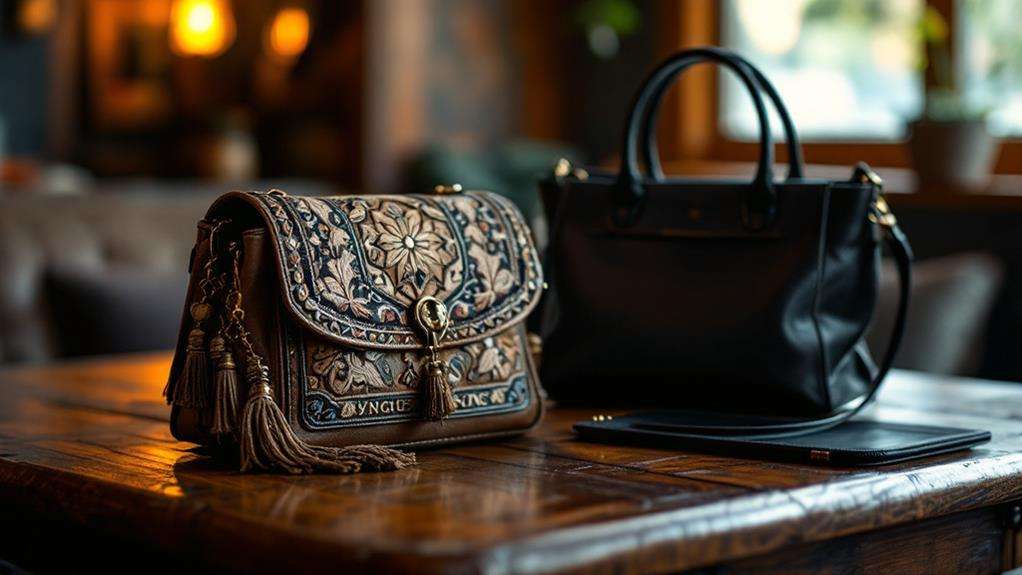
The current fashion world finds inspiration in the timeless elegance of reticules, seamlessly weaving their historical charm into modern designs. Designers often incorporate the intricate beadwork and practical drawstring closures of reticules into contemporary handbags. This blend of utility and artistic expression nods to the past while catering to present fashion trends. The resurgence of pineapple-shaped reticules in fashion collections highlights their enduring appeal and luxurious connotations, making them iconic symbols in modern fashion.
If you're a vintage fashion enthusiast, you'll likely appreciate the allure of original reticules as collectible items. These pieces, found in antique markets and online platforms, offer a tangible connection to women's fashion history. Their vintage aesthetics continue to captivate, serving as reminders of the elegance that defined earlier times.
For those who enjoy crafting, sewing communities provide an opportunity to investigate the creation of reticules. By using historical techniques, you can craft personalized versions that celebrate their vintage charm. Additionally, museums and exhibitions increasingly showcase reticules, emphasizing their cultural significance. This fosters a renewed interest in how these accessories marry utility with artistic expression, ensuring reticules remain relevant in the modern fashion landscape.


